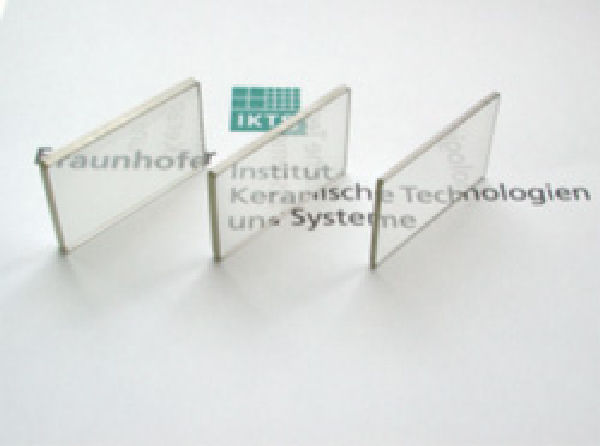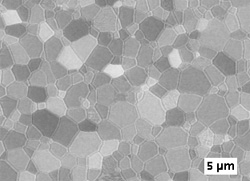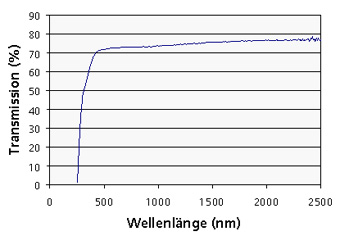


New transparent ceramics with high refractive index
The miniaturization of optical devices requires new materials with high refractive index. Here, ceramics can overcome the restrictions of traditional optical glasses which are limited to n = 1.5-1.85. A ceramic candidate material is transparent cubic zirconium oxide which exhibits a high refractive index of n = 2.18.
ZrO2 ceramics use doping additives (e.g. Mg, Ca, Y) for a stabilization of the cubic phase. These (traditionally opaque, white) zirconia ceramics commonly exhibit extended grain growth resulting in coarser microstructures with typical grain sizes of about 10 µm and rather low hardness values < 12 GPa. Hence, it was the objective of the development at IKTS Dresden to achieve, on the one hand, a high transmission (bound to extremely dense microstructures with a residual porosity < 0.05 %) which has to be associated, on the other hand, with smaller grain sizes.
Fig. 1/2 show examples and a microstructure of such a transparent cubic zirconia ceramic.
Advantages
- High in-line transmission near at the theoretical limit of 75.5% (at λ= 640 nm, aperture = 0.57°, 1 mm thickness), Fig. 3
- The hardness HV10 = 13 GPa (10 kg testing load) represents an upper limit for ZrO2
- Strength (4-point bending) about 230 MPa
- Chemical stability in corrosive media
- Cost efficient manufacturing e.g. by pressing and sintering applicable for larger production volumes
Products and services offered
- Materials development of transparent ZrO2 ceramics with high refractive index
- Supply of samples and small series
- Support in product development and customized applications